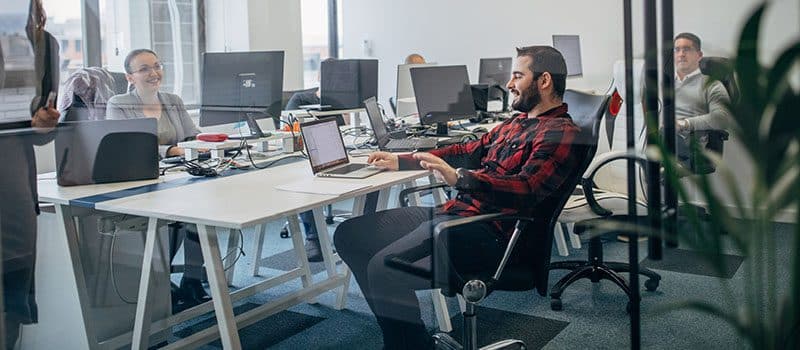Today’s businesses are more mobile and collaborative than ever before. To meet the needs of their employees and partners, IT departments are transforming the way they think about desktops. Organisations are adopting virtual desktop infrastructure (VDI) solutions to provide users with secure remote access to their desktops from any device.
With the rise of mobile devices and remote working practices becoming more commonplace, there is a need for an agile and dynamic approach when it comes to using Windows computers. That’s where the virtual desktop comes in. Read on to find out what it is and how it can benefit your business.
What is Windows Virtual Desktop?
Windows Virtual Desktop (VD) is a service that allows you to create a Windows desktop on your Mac, PC, or tablet. It is typically used by businesses to allow employees to access the same files from home, or in remote offices. VDs can be installed on a single computer or multiple computers, and allow users to share their screen and data.
With the right hardware and software configuration, Windows VDs can provide significant advantages over traditional workstation deployments. They are especially useful when deploying applications in a public cloud environment with limited available resources.
Virtual desktops can also be useful in environments where IT resources are scarce or expensive, such as corporate headquarters or remote branches.
Reduced costs
Windows 11 VD provides a powerful way to reduce your IT costs. As a cloud-based service, you won’t need to buy hardware or additional IT infrastructure to support your users.
If you’re managing multiple PCs, it’s easy to run up big IT bills by buying new hardware and software every year or two. Windows VD will help you save money by providing a single centralised location for all of your user devices. This will support remote working environments, which, in turn, will reduce your energy costs at the office, or even eliminate the need for office space entirely.
Multiple virtual desktops
Windows 11 supports multiple VDs, allowing you to access multiple windows, apps, and views at the same time. These are very useful for working on a number of different projects at once, but also allow you to keep separate work spaces for different purposes. They also make it easier to organize your work environment and keep everything where you want it.
Robust cyber security features
Virtual desktop security risks are low since data and files are all stored on a Virtual Private Network (VPN) that only grants access to the users who own it. Windows VD also has a lower number of data paths that need inspection, which makes monitoring simpler and quicker.
Windows VD offers the same level of cyber security as its host, Microsoft Azure.
Azure’s cyber security features include:
Advanced Threat Protection: detects and mitigates advanced attacks, and protects your data in transit by blocking malicious traffic before it reaches your endpoints.
Windows Defender: a cloud-based security service that scans and monitors your PC to protect against viruses, spyware, and other threats.
Multi-factor authentication: a security measure that requires two or more factors to be entered along with one another in order to obtain access, such as a password and a one-time code.
Identity and Access Management: provides identity management functionality such as user authentication, password management, and access control.
Microsoft Enterprise Mobility and Security: encompasses capabilities such as device management, endpoint security, identity management, and compliance management.
Enable remote workforce
Windows virtual desktop allows remote employees to access the same tools that their on-site colleagues have, without having to install any additional software or connect to a network.
VDs are a great way to provide remote workers with an environment similar to their normal work station, but also offers some added benefits, such as access to all of their personal files and applications. Not only do VDs help increase productivity, but it also helps reduce office costs by eliminating the need for additional IT staff.
This makes it easier for remote workers to be productive from anywhere, on any device.
Business continuity
Windows VD provides a secure and reliable back-up environment for your business. Once your main computer goes down, you can continue working from a secondary device, such as a laptop or tablet. This can save you valuable time and prevent costly downtime.
With Windows VD, you can minimise the impact of disaster on your business by keeping critical functions running in the background.
Get started with Windows 11 Virtual Desktop
Windows VD is a great way to provide remote employees with an environment similar to their normal work station, but also offers some added benefits, such as access to all of their personal files and applications.
The Microsoft specialists at Steadfast Solutions can help you implement Windows 11 VD into your business, train your users, and manage your environment for optimal performance and security.




